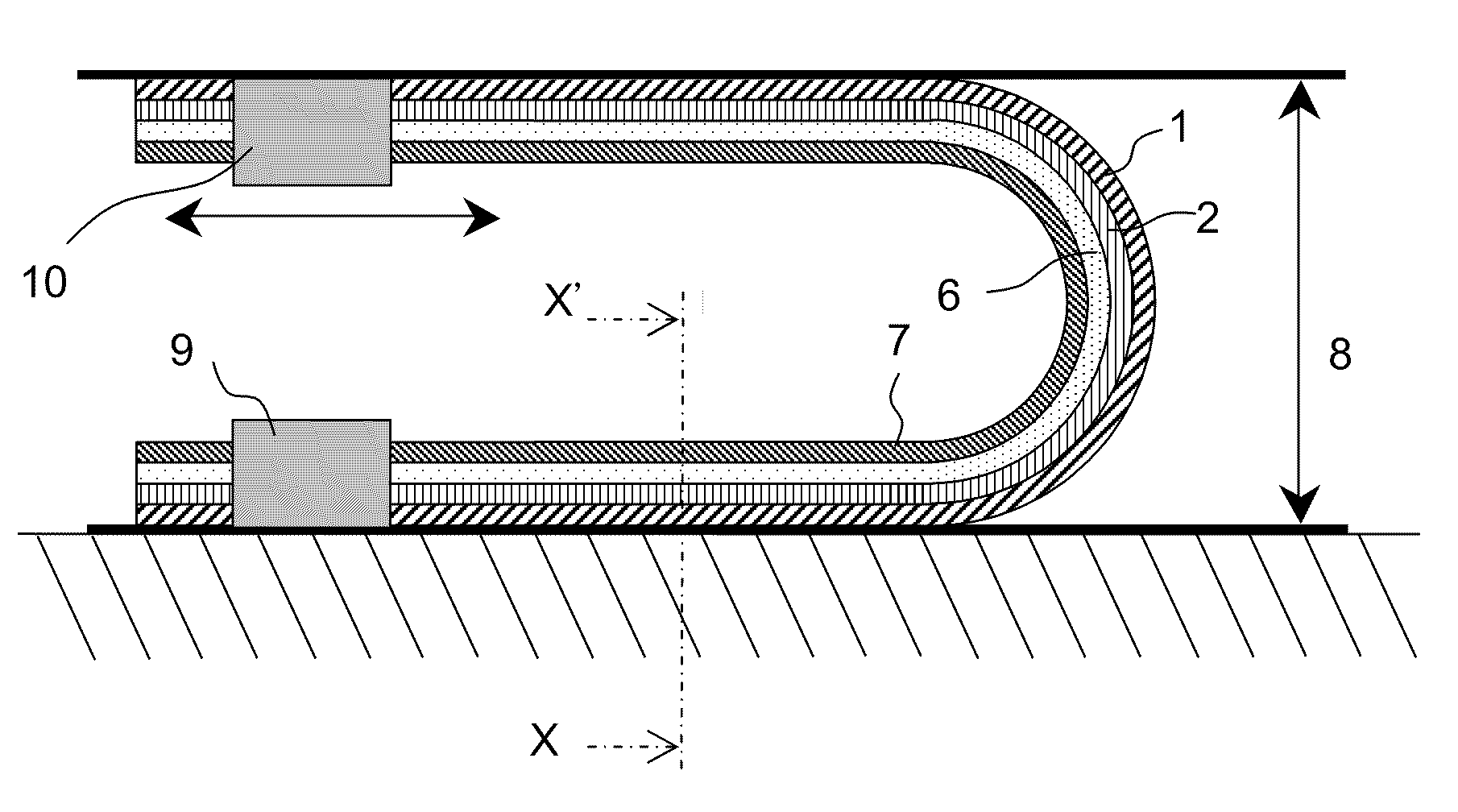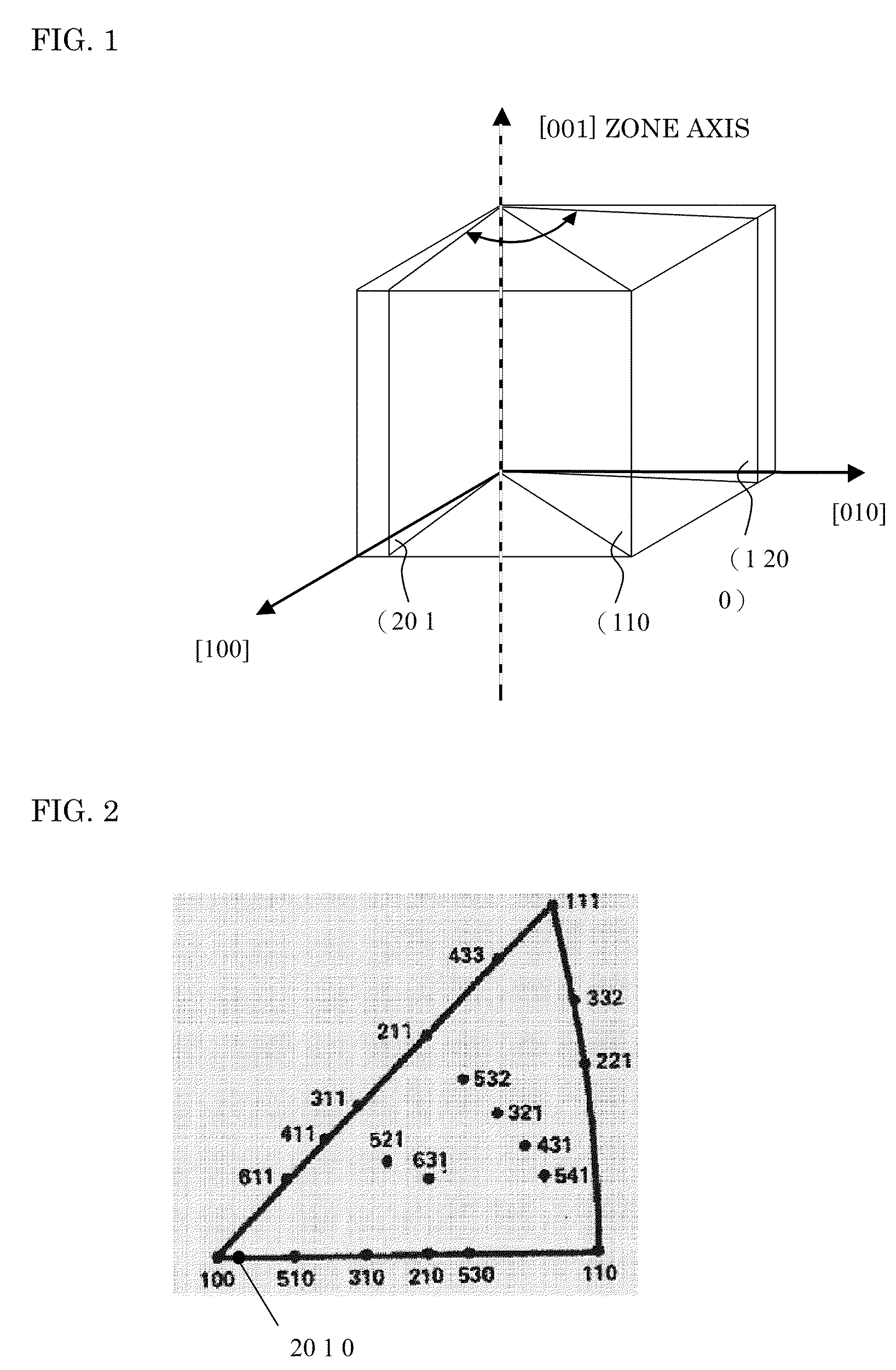Flexible circuit board and method for producing same and bend structure of flexible circuit board
a flexible circuit board and flexible technology, applied in the direction of printed circuit manufacturing, printed circuit aspects, conductive pattern formation, etc., can solve the problems of poor strength, no longer usable circuit boards, cracked or broken wiring, etc., and achieve excellent bendability and high durability.
- Summary
- Abstract
- Description
- Claims
- Application Information
AI Technical Summary
Benefits of technology
Problems solved by technology
Method used
Image
Examples
synthesis example 1
[0079]N,N-dimethylacetamide was set in a reaction container which included a thermocouple and an agitator. Nitrogen may be introduced into the reaction container. Next, 2,2-bis [4-(4-aminophenoxy) phenyl]propane (BAPP) was dissolved while being agitated in the reaction container. Then, pyromellitic dianhydride (PMDA) was added. Charging was performed so that a total monomer charge amount was 15 wt %. After that, agitation was continued for three hours to obtain a resin solution of polyamide acid-a. A solution viscosity of the resin solution of polyamide acid-a was 3,000 cps.
synthesis example 2
[0080]N,N-dimethylacetamide was loaded in the reaction container which included a thermocouple and an agitator. Nitrogen may be introduced into the reaction container. Next, 2,2′-dimethyl-4,4′-diaminobiphenyl (m-TB) was charged to the reaction container. Then, 3,3′, 4,4′-biphenyl tetracarboxylic dianhydride (BPDA) and pyromellitic dianhydride (PMDA) were added. Charging was performed so that a total monomer charge amount was 15 wt % and a molar ratio between the respective acid anhydrides (BPDA: PMDA) was 20:80. After that, agitation was continued for three hours to obtain a resin solution of polyamide acid-b. A solution viscosity of the resin solution of polyamide acid-b was 20,000 cps.
example 1
[0081]The polyamide acid solution-a prepared as described above was applied to the copper foil-A and dried (thermoplastic polyimide film having thickness of 2 μm was formed after curing). Then, the polyamide acid-b was applied and dried (low-thermal expansion polyimide film having thickness of 12 μm was formed after curing). After that, the polyamide acid-a was applied and dried (thermoplastic polyimide film having thickness of 2 μm was formed after curing). Then, the copper foil-A was subjected to a heating condition for heating at a temperature in a range of 300° C. to 360° C. for an integral time equal to or longer than five minutes to form a polyimide layer having a three-layer structure. Next, the copper foil-A was cut into a rectangular size which has a length of 250 mm in a rolling direction (MD direction) and a width of 150 mm in a direction (TD direction) orthogonal to the rolling direction, to obtain a one-side copper-clad laminate 4 including the polyimide layer (resin la...
PUM
| Property | Measurement | Unit |
|---|---|---|
| thickness | aaaaa | aaaaa |
| thickness | aaaaa | aaaaa |
| thickness | aaaaa | aaaaa |
Abstract
Description
Claims
Application Information
 Login to View More
Login to View More - R&D
- Intellectual Property
- Life Sciences
- Materials
- Tech Scout
- Unparalleled Data Quality
- Higher Quality Content
- 60% Fewer Hallucinations
Browse by: Latest US Patents, China's latest patents, Technical Efficacy Thesaurus, Application Domain, Technology Topic, Popular Technical Reports.
© 2025 PatSnap. All rights reserved.Legal|Privacy policy|Modern Slavery Act Transparency Statement|Sitemap|About US| Contact US: help@patsnap.com



